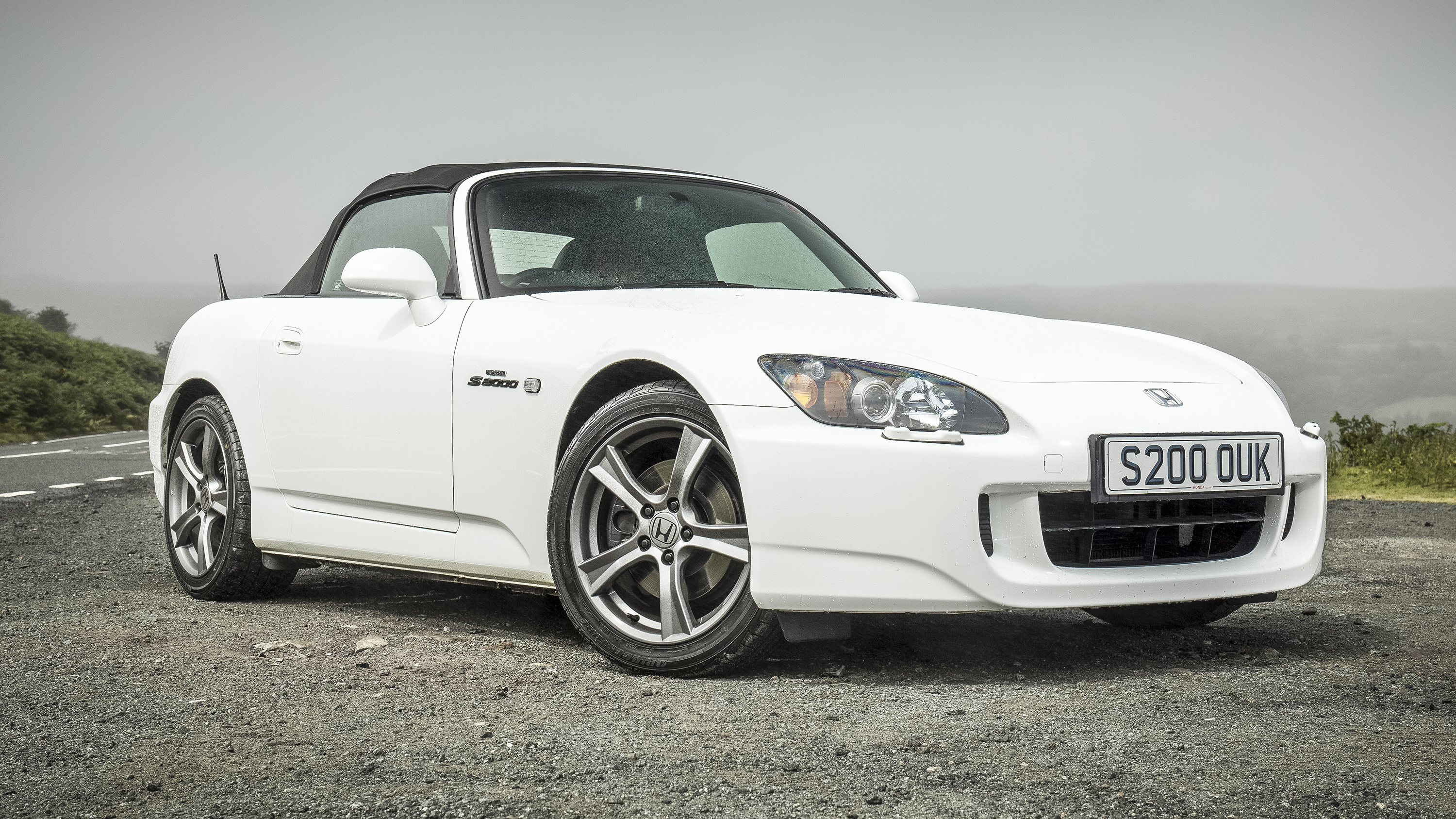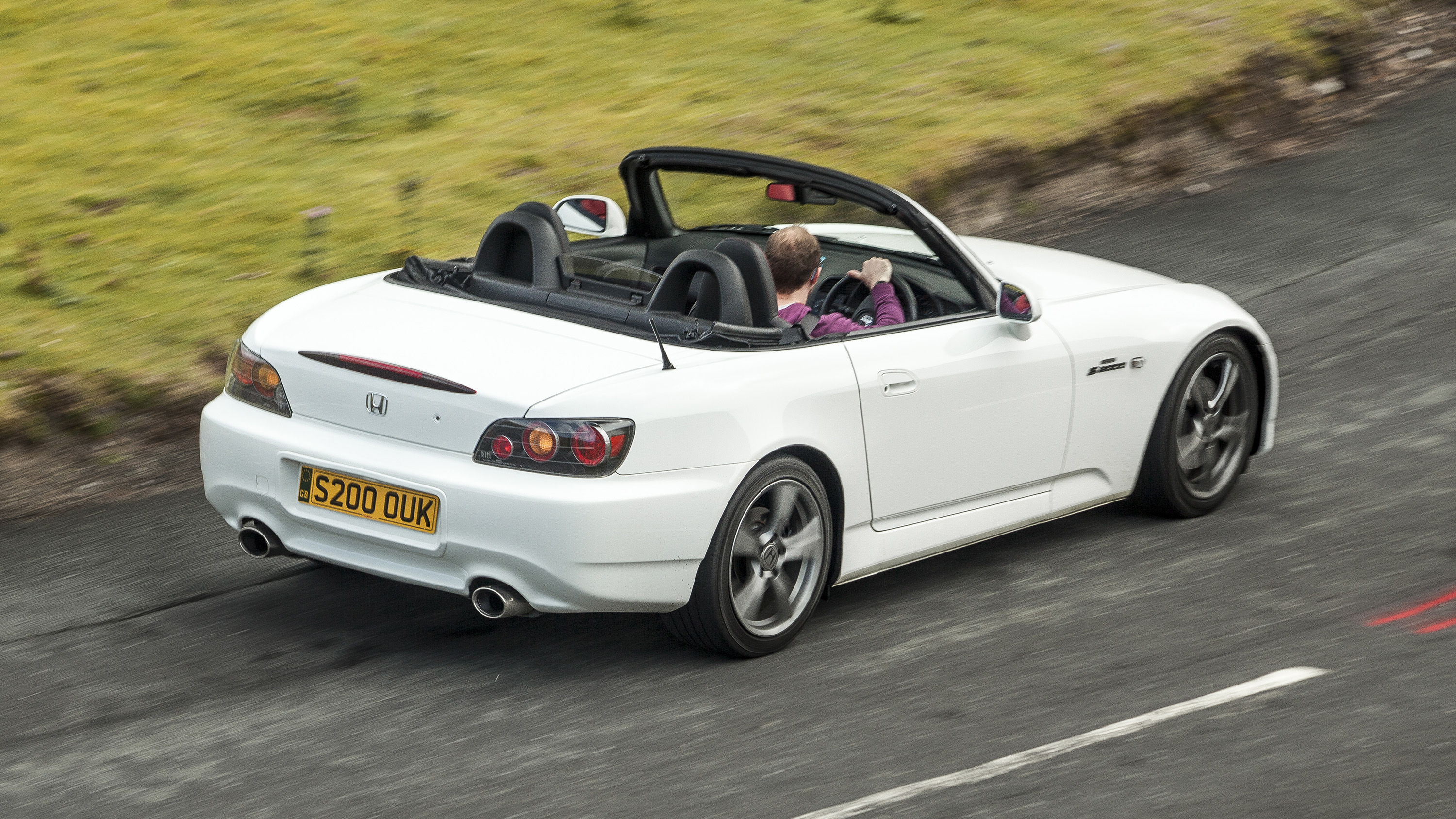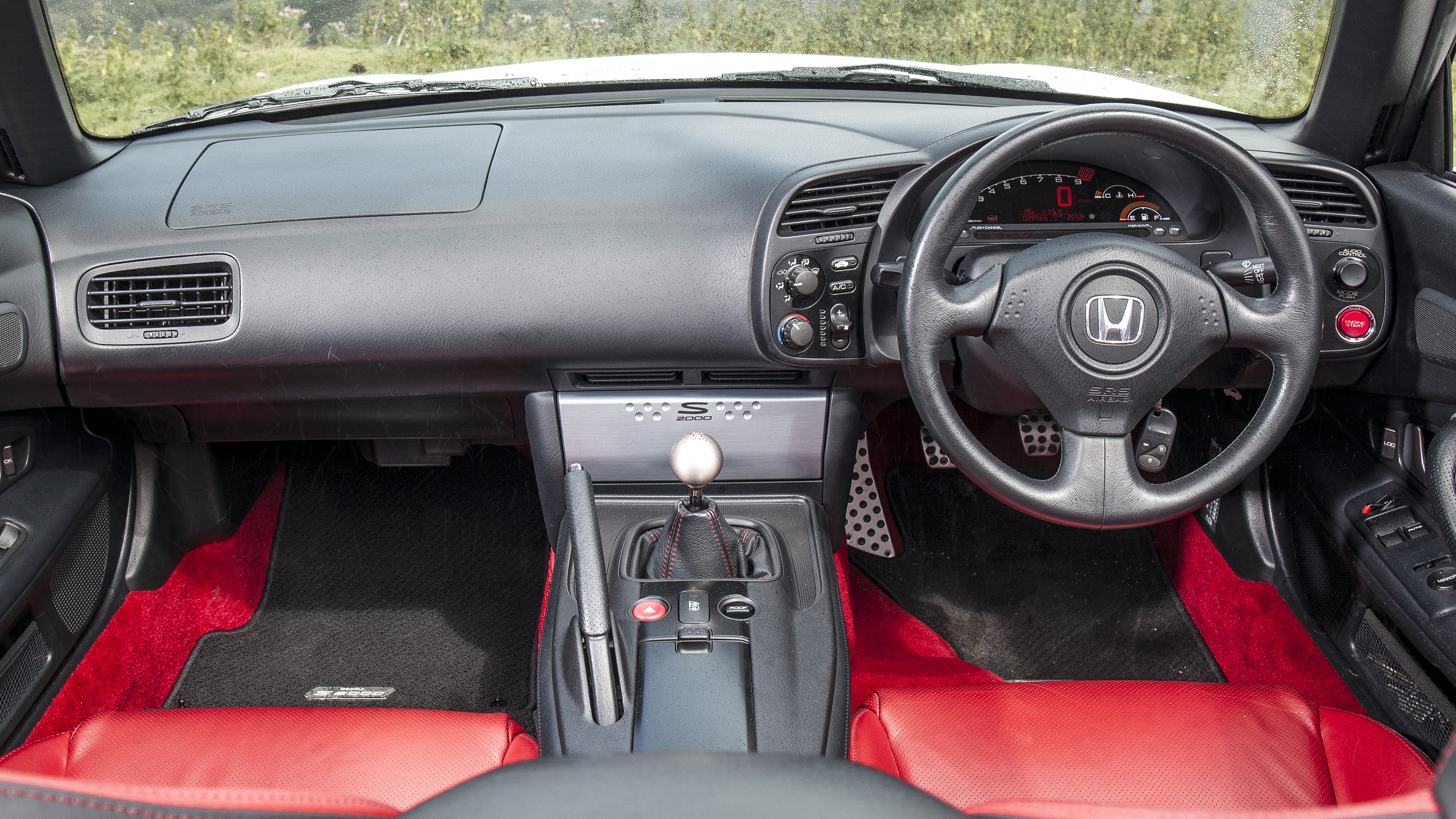
Honda S2000 (1999) review
Driving
What is it like to drive?
Low-down performance is not the S2000’s strong suit. Below 6,000rpm, its engine barely feels like it belongs in a sports car, and until you reach that figure, the revs do not build quickly. But keep your foot in, and as the digital dial passes six, all hell breaks loose, as the wee Honda aggressively and intoxicatingly screams to its near-9,000rpm red line.
You rev. You rev a bit more. You rev until you think pistons are going to burst through the bonnet, before grabbing the next gear via the utterly, utterly superb manual shift. One of the best ever. Perhaps the best.
Performance is certainly hard-won in an S2000. But it’s all the more rewarding because of it. And when you’ve put so much effort into untapping its potential, you’re loathe to lose it, so you try to keep the car in its sweet spot and the engine in its upper reaches.
It’s an enthralling, consuming process. If you’re accustomed to modern, turbocharged sports cars, this will take some serious recalibration of your brain. But once the attitude clicks, you'll regularly hunt the VTEC's cam profile change where the S2000 turns from sensible to sublime.
As you maintain momentum to keep the engine singing, you appreciate the car’s balance – the engine is tucked right back behind the front axle, for perfect 50:50 weight distribution – and how wonderful each of its controls feel.
With one major caveat: the S2000 Edition 100, driven here, signalled the end of production. As such, it came with all of the subtle chassis tweaks Honda introduced over the car’s life. As well as stability control, something which only became optional in 2006, and standard two years later. Wales provided three seasons in one day for our photoshoot, and this particular car felt surefooted throughout.
Early S2000s, though, are infamously twitchy, particularly in the wet. The good news is those facelift tweaks centred around setup, not componentry, so S2000 specialists can adjust the suspension of earlier cars to match their younger relations. Bigger wheels and better tyres are tweaks you can also make to suit your own tastes.
Either way, it's a fantastic car to hone your own skills in. To operate its drivetrain as smoothly as possible, you want to get your pedal inputs just right, and the S2000 is massively appreciative of a blip on downchanges, especially when you’re dropping down a gear to get into that 6,000rpm-plus powerband.
Throughout its life, critical acclaim wasn’t consistent for the S2000. It did face competition from the Porsche Boxster, Lotus Elise and several TVRs, among others, but its highly strung driving experience was never going to please everyone. With advance knowledge of how en masse sports car makers would turn to turbocharging, though, would the S2000 have been celebrated more? We suspect so.
Featured

Trending this week
- Car Review
BMW iX3






